During pregnancy, a combination of factors can result in emanating a radiant glow. The greater blood volume in pregnancy brings more blood to the vessels making skin appear to be flushed. Hormonal changes also help in the skin glands to secrete more sebum resulting in shinier skin.
However, factors contributing to pregnancy glow might have a downside as well. Fluctuating hormones may result in several skin conditions during pregnancy. In addition to many physical changes, women experience changes in their skin as well during pregnancy.
Some of the skin conditions include dark spots on the breasts and inner thighs, acne, spider veins, varicose veins, stretch marks, melasma, and linea nigra. Many of these conditions are normal and harmless that simply goes away after the birth of the baby.
Let’s discuss some of the skin changes caused by pregnancy:
Hyperpigmentation
Dark spots or dark patches developing on the skin because of an increase in naturally occurring melanin are known as Hyperpigmentation. Typically, it resolves after delivery, however, it might persist for many years.
In pregnancy, a common example of Hyperpigmentation is melasma, also referred to as “the mask of pregnancy.” Its characteristic features consist of blotchy brown patches on the face, nose, forehead, and cheeks. It has many causes and pregnancy is just one of them.

Image Credit: Commons.wikimedia.org
You can reduce your melasma symptoms:
- Avoid staying out in the sun as much as possible, especially between 10 am to 2 pm
- Use a high sun protection factor sunscreen
- Wear a wide-brimmed hat whenever in sun
- Use mild cleansers to reduce irritation or drying
If melasma continues even after delivery you can consider cosmetic dermatological procedures such as photofacials and diamond microdermabrasion. Seek consultation with your dermatologist about other ways to treat melasma during pregnancy.
Pruritic Urticarial Papules and Plaques of Pregnancy (PUPPP)
PUPPP is a condition caused due to the rapid stretching of the skin. In this, pale red lesions appear on the skin of a pregnant woman resulting in a significant amount of itching, stinging, or burning. These lesions may vary in size ranging from small to larger areas forming a plaque. These bumps commonly occur on the breasts, abdomen, buttocks, arms, and legs. This condition fades after delivery. A skin doctor may prescribe topical corticosteroid or antihistamine to relieve itching and inflammation.
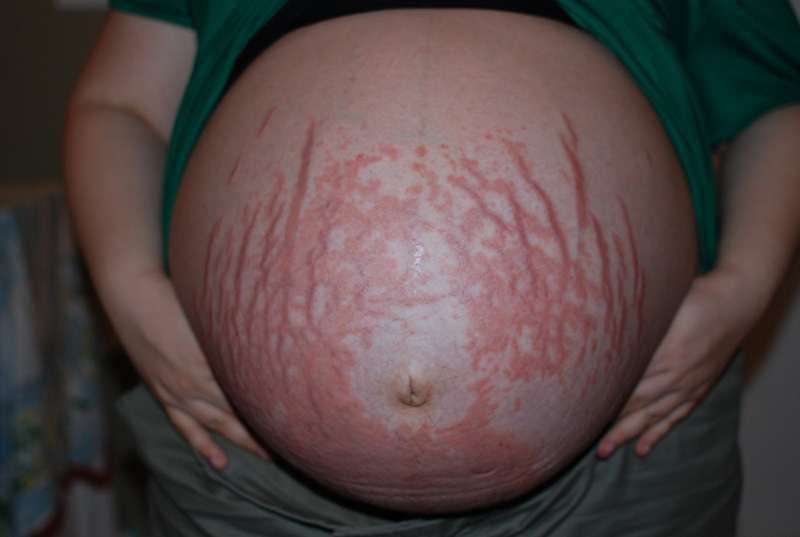
Image Credit: Dermatologyadvisor.com
Taking self-care steps can help in the reduction of the symptoms of PUPPP, including:
- Use lukewarm water for washing
- Apply cold compressions
- Wear loose and lightweight clothes
- Avoid using soap on PUPPP affected areas
Acne
Acne is one of the most common skin disorders among pregnant women. Acne may get even worse during pregnancy because of the fluctuating hormones.
There are many acne treatments available including prescribed and non-prescribed medications. However, pregnancy is a delicate issue and not all medications are safe to sue. So, discuss issues and medications with your dermatologist before its usage. Products to avoid during pregnancy include hormonal therapy and isotretinoin due to an increased risk of congenital anomalies.
General hygiene practices can help combat acne, such as
- Wash you face every day with mild cleansers
- Avoid picking the pimples so you don’t end up with scars
- Use oil-free cosmetics
- Use some of the over-the-counter (OTC) treatments safe that are safe during pregnancy
Have a word with your skin specialist before trying anything.
Stretch Marks
Another common ailment in pregnant women is stretch marks. These occur when the dermis- skin’s middle layer is stretched a long way rapidly or over a long time period. Women often experience stretch marks at the abdomen, breasts, thighs, or buttocks. Initially, they have a reddish-purple appearance and fade over time to silver or white.
Although stretch marks often fade with time, they never completely disappear. The postpartum treatment is generally ineffective, however, a person may consider laser treatments and prescribed creams in some cases. If you want to use a product for stretch marks, start doing so long before they appear. Check with your doctor first to use them during pregnancy.
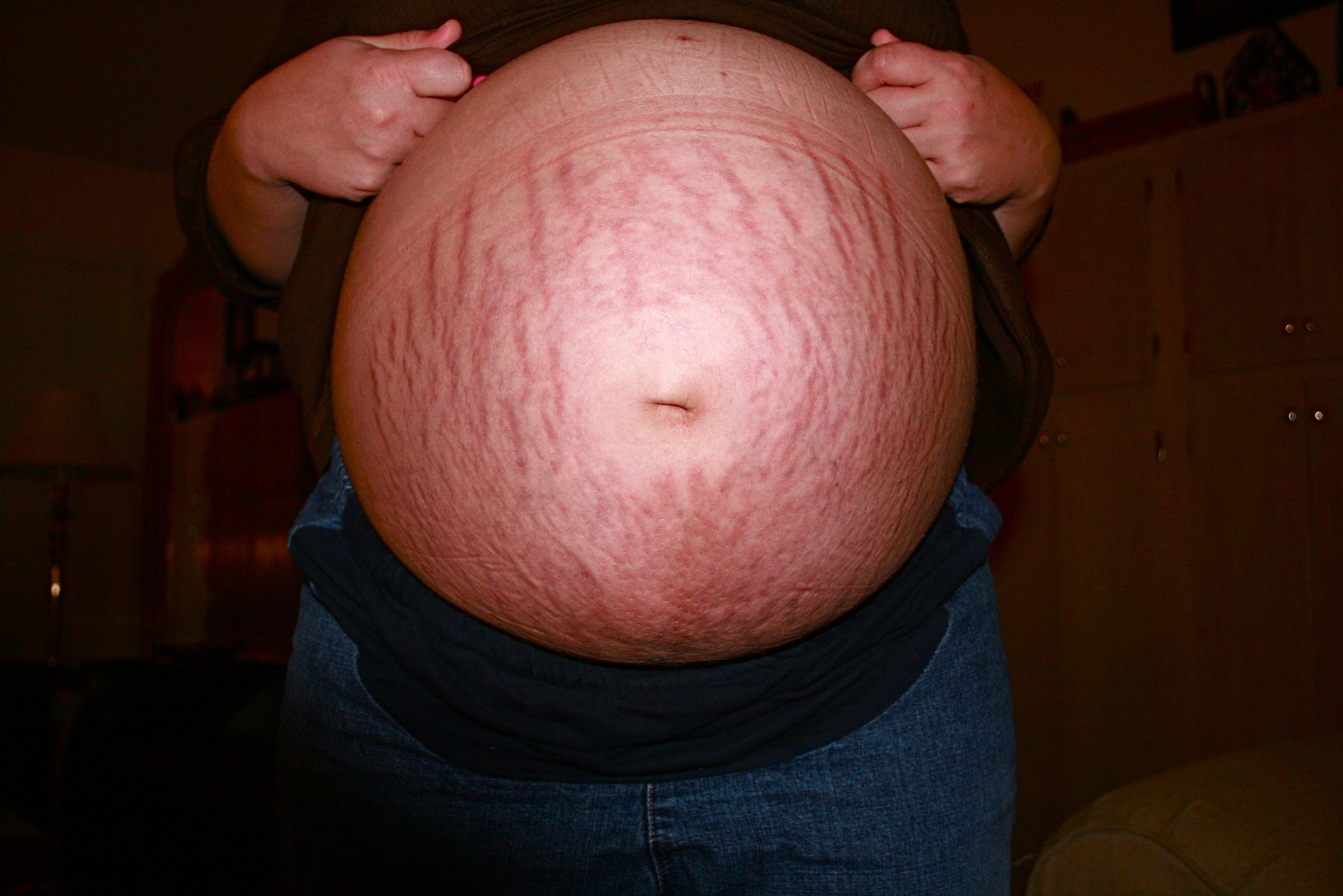
However, during pregnancy, an easy practice of keeping your skin hydrated with moisturizers is known to be a sensible control measure.
Spider Veins or Angiomas
These are small red damaged veins that appear on the surface of your face, arms, neck, and legs. During pregnancy, the body flushes more blood around your body to meet the needs of your baby. This exerts strain on blood vessels and causes capillaries to leak or burst to result in fine purple or red lines in a small area. The face is more likely to experience spider veins as it is the area most exposed to extreme temperatures.
Spider veins are not harmful or painful and fade overtime after the baby is delivered. However, you can reduce them by protecting your bare skin from extremes of temperatures. If they persist you can consult your dermatologist for various treatments to make them disappear such as laser treatment and sclerotherapy.
Pemphigoid Gestationis
Pemphigoid gestationis (PG) is a rare skin condition that occurs during the second or third trimester of pregnancy. It begins with the appearance of extremely itchy red lesions or blisters, like hives around your belly button on your abdomen. The bumps can spread to other parts of your body as well including the trunk, arms, and legs.
Pemphigoid gestationis is an autoimmune disease in which your immune system begins to attack your own body tissue. The placental cells are considered foreign by the immune system of the body and respond against them. Although rash disappears after the delivery, it flares up in a few cases with menstrual periods, future pregnancies, and use of oral contraceptives.
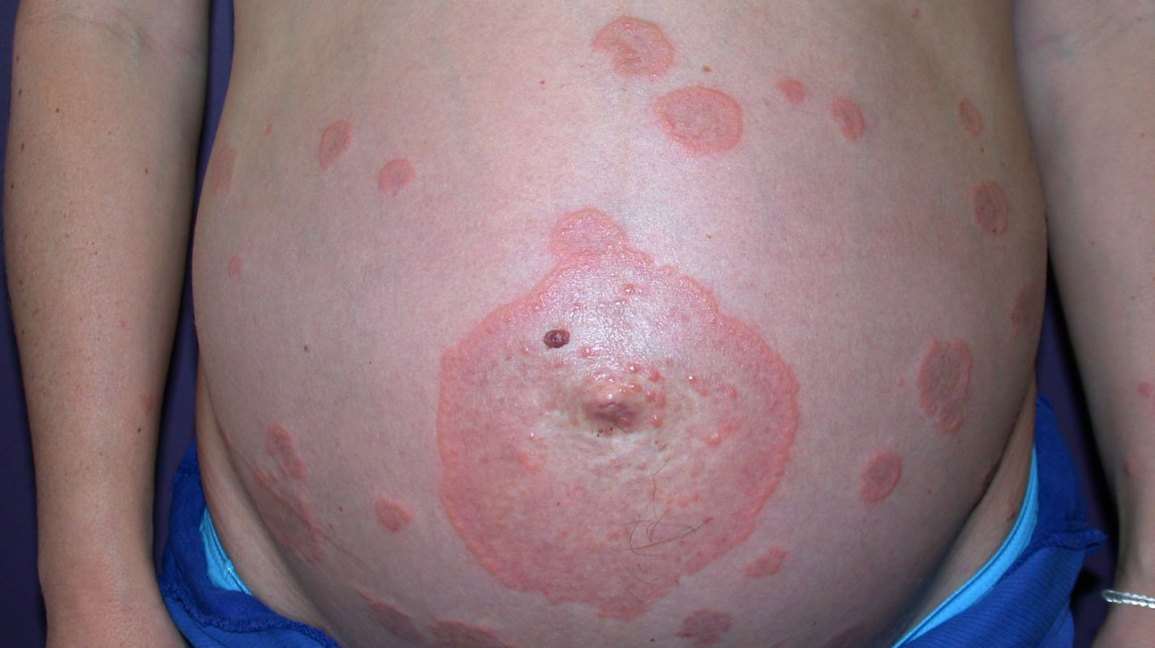
Image Courtesy: Healthline.com
If you have mild symptoms, your dermatologist may prescribe topical corticosteroids for itching. These help in reducing the activity level of your immune system at the site of blisters that provides you relief.
Linea Nigra
Linea nigra is a vertical dark brown line down your abdomen. This is a harmless mark of pregnancy. It does not appear on every woman and is more likely to appear on women with darker skin.
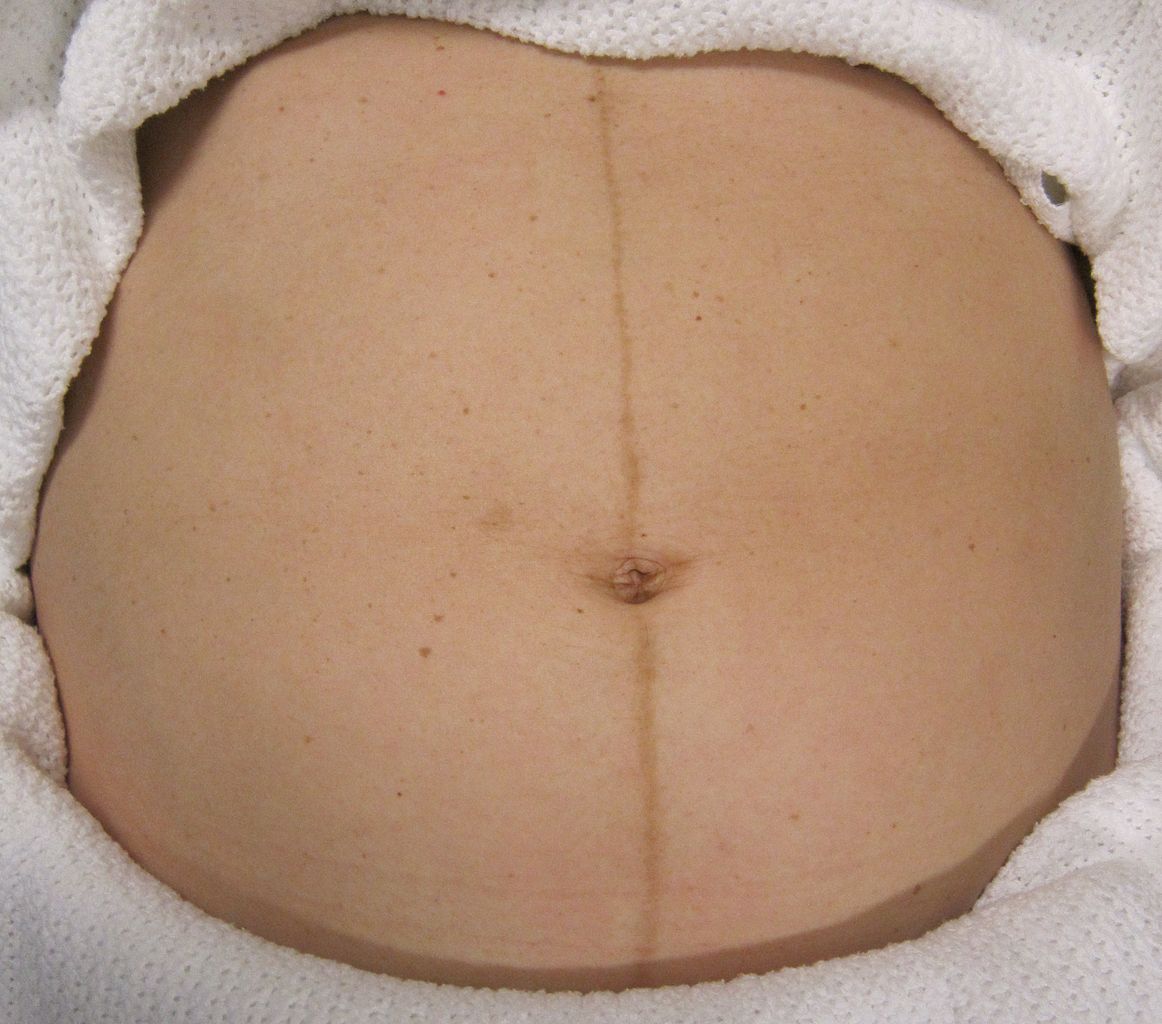
The dark line usually appears around the second trimester of pregnancy, when the abdomen muscles start stretching and separate to accommodate the growing belly. Melanin pigment marks at the area of separation which is the linea nigra. It fades away completely within a few weeks of delivering a baby.
Your body goes through many changes during pregnancy. Skin conditions are more annoying than anything causing irritation and frustration among pregnant women. Tell your doctor about your symptoms to rule out any serious condition and find potential relief.
If you are interested in knowing more about various laser treatments and their results, let us help you explore your options. Schedule an appointment for a visit at our Lansing or Mount Pleasant dermatology office, whichever is convenient for you.
Disclaimer
The information contained on safehealthcenter.com is for informational and educational purposes only and should not be relied upon for any medical or diagnostic purpose, or for the treatment of any condition or symptom. This information is subject to change without notice and should not be considered current, complete, or exhaustive. You should refrain from relying on such information to recommend a course of treatment for you or any other individual without consulting our experts.




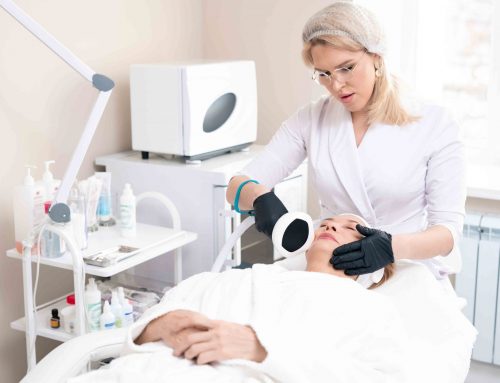
Leave A Comment